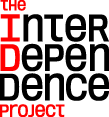
Theme: Creative Process
This installation contains a step-by-step display of the lost wax process, the technique used to create many sculptures in our collection. During the first step of the process, the artist carves a wax model of the sculpture. Once the model is made, the artist covers the model with several layers of clay creating a mold while leaving two holes in the bottom. Once the mold is fired, the wax figurine inside melts and drains out of the holes leaving space for the molten metal to be poured. After the metal has cooled, the mold is gently broken off revealing the crude metal sculpture inside. The metal is cleaned, inlaid with semiprecious stones, and gilded. Lastly, the artist will paint the eyes which are said to transfer the power and the presence of the deity.
Image credit: Wax model in parts (Stage 1 creating wax model), 2010, Kathmandu, Nepal, Wax, Rubin Museum of Art, SC2009.14.2a-v
Mindfulness Meditation Series
Himalayan practitioners have, for centuries, used meditation to quiet the mind, open the heart, calm the nervous system, and increase one’s ability to focus. Now, western scientists, business leaders, and the secular world have embraced meditation as a vital tool for brain health. Learn more
Presented in partnership with Sharon Salzbergand the Interdependence Project.


About the Speaker
Ethan Nichtern founded the Interdependence Project in 2005. In the summer of 2010 he was empowered by his teacher, Sakyong Mipham Rinpoche, as a Shastri, a senior teacher in the Shambhala tradition, representing the New York region. Nichtern teaches meditation and Buddhist psychology classes and retreats in New York City and throughout the United States. He is the author of The Road Home: A Contemporary Exploration of the Buddhist Path, the novella/poetry collection Your Emoticons Won’t Save You, and One City: A Declaration of Interdependence.
